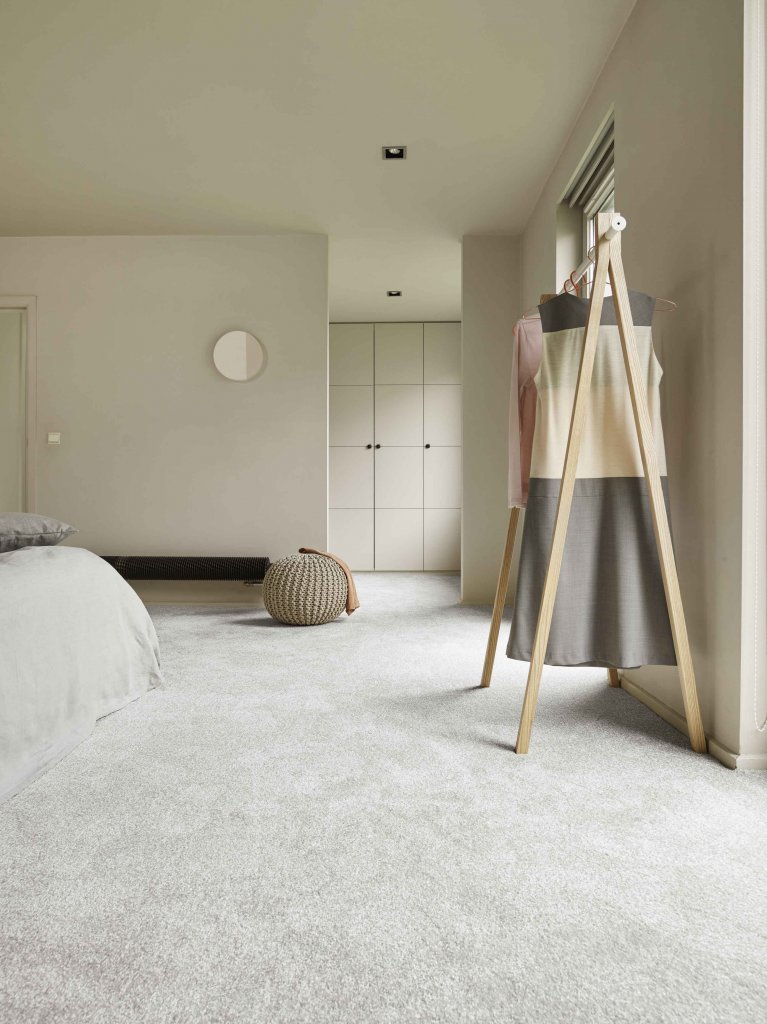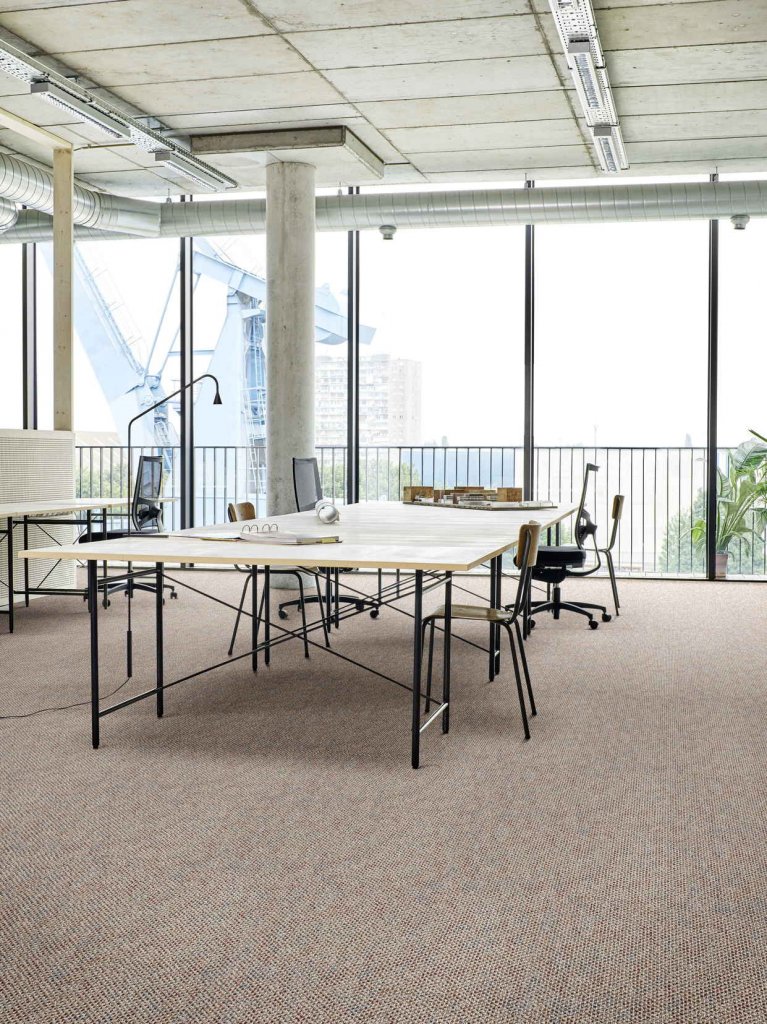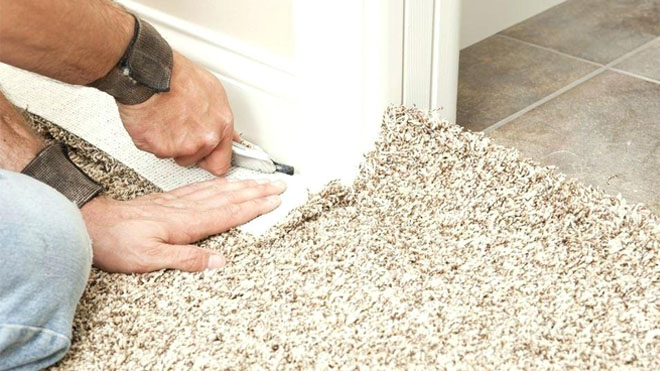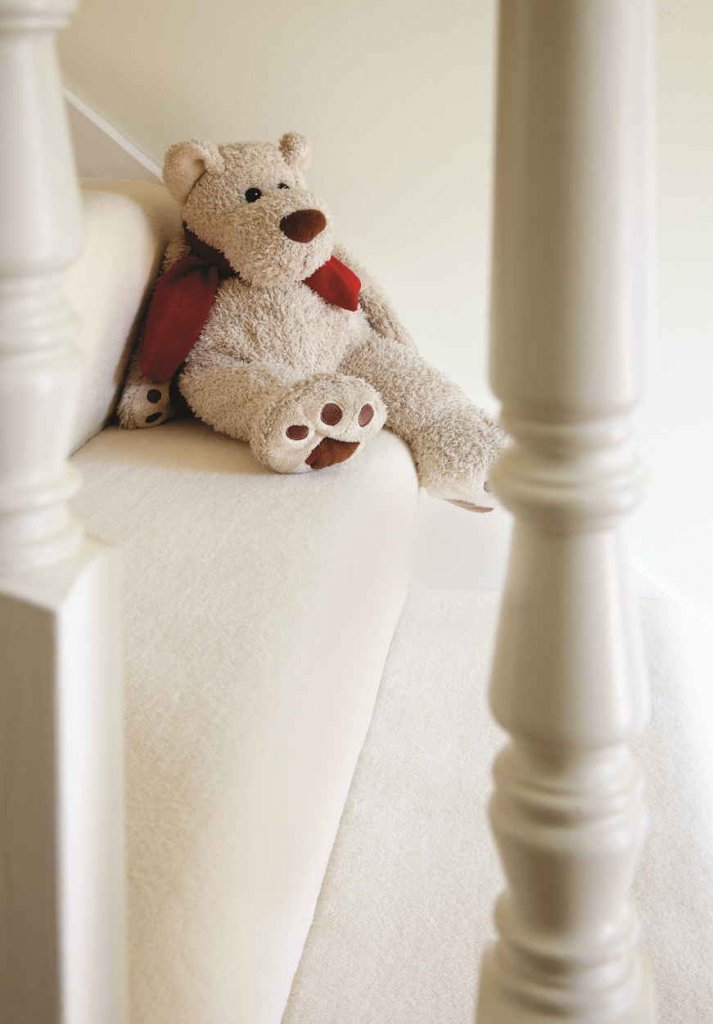Carpet

Expert tips: proper carpet laying
Carpet is a modern and practical floor covering, it is easy to lay and keep clean. There are collections that by their characteristics and design are more suitable for an apartment (Artis or Bali brand Ideal), there are those that are intended for offices (for example, Andorra brand Carus, Noblesse brand Ideal).


Design 139 Design 154
We have prepared detailed instructions on how to lay carpet, and supplemented it with practical tips. If you follow them carefully, even a person with minimal skill in such work can easily cope with styling.
Materials
● Moquette
● Fasteners (optional):
○ double sided adhesive tape;
○ glue;
● Plinth
● Threshold profile
Tools

Additionally, you may need a tool for cutting skirting boards and threshold profiles, as well as fasteners for them.


Roll out the rolls of carpet in the room where you plan to lay, and let it rest for 24 hours so that the material straightens under its own weight.
Unpack the substrate and leave it to acclimatize for 24 hours in a dry and warm room — at a temperature of +18+25 °C and a relative humidity of 40-60%.
Make sure that the base of the future floor:
● dry — the maximum humidity for a wooden base is no more than 50%, cement — no more than 2 CM%, gypsum — no more than 0.5 CM%;
● level — the height difference is no more than 2 mm for every 2 meters;
● strong and dust — free-use a metal object (knife, key) on the base, if dust has formed as a result — strengthen it with a primer, let it dry, dust it with a vacuum cleaner.
If you are using a substrate, lay it on the floor base. Lay the sheet substrate in a staggered order, roll — transversely with respect to the carpet sheets. Glue the joints of the substrate with adhesive tape.
● Measure the carpet to the size of the room, taking into account the allowance of 50 mm on the walls (to compensate for the possible curvature of the walls).
● Lay the carpet on the floor base and smooth the roller from the center to the edges.
Advice! Avoid creases and creases, such defects do not recover over time.
Advice! Carpet with a pile that has a noticeable slope is recommended to be laid so that the pile looks towards the window.
● Trim the carpet around the perimeter of the room. It is recommended to put a Board under the material so that the knife does not cut through the substrate (if there is one) and does not blunt on the concrete base.
Advice! Start cutting from the center of the canvas, not the corner. This way there is less chance of an uneven cut.
● Secure the edges of the carpet with a skirting Board.
● Secure the edge of the canvas in the doorway with a threshold profile.
Suitable for rooms of any size. Allows you to re-lay the coating without damage to the material.
● Stick the tape, without removing the top protective layer, around the perimeter of the room close to the walls.
● Over the entire area of the room, make a grid of Scotch tape, the cell size is approximately 50x50 cm. Do not remove the top protective layer.
● Measure the first piece of carpet according to the size of the long wall of the room, taking into account the allowance of 50 mm for the walls (to compensate for their possible curvature) and lay it on the base.
Advice! Stack the canvas by placing the side side on a long wall to reduce the length of the joints.
● Pry up the carpet on the side by half its width. Gradually peeling off the top protective layer of double-sided tape, glue the canvas, smoothing it with a roller from the center to the edge. Repeat with the second half.
● Glue the rest of the carpet in the same way.
● Glue the joints between them to an additional strip of tape.
● Trim the carpet around the perimeter of the room.
● Cover the edges with a skirting Board.
● Secure the edge in the doorway with a threshold profile.


Design 139 Design 154
We have prepared detailed instructions on how to lay carpet, and supplemented it with practical tips. If you follow them carefully, even a person with minimal skill in such work can easily cope with styling.
What you need.
Important! Before starting installation, carefully read the manufacturer's instructions.Materials
● Moquette
● Fasteners (optional):
○ double sided adhesive tape;
○ glue;
● Plinth
● Threshold profile
Tools

Additionally, you may need a tool for cutting skirting boards and threshold profiles, as well as fasteners for them.

2. Material preparation.

Roll out the rolls of carpet in the room where you plan to lay, and let it rest for 24 hours so that the material straightens under its own weight.
Unpack the substrate and leave it to acclimatize for 24 hours in a dry and warm room — at a temperature of +18+25 °C and a relative humidity of 40-60%.
3. Preparation of the base for laying.
Pre-clean the floor from old coating, dust and debris. Pay special attention to small protruding irregularities — remove them with a sander, otherwise in the future the carpet may break at this point.Make sure that the base of the future floor:
● dry — the maximum humidity for a wooden base is no more than 50%, cement — no more than 2 CM%, gypsum — no more than 0.5 CM%;
● level — the height difference is no more than 2 mm for every 2 meters;
● strong and dust — free-use a metal object (knife, key) on the base, if dust has formed as a result — strengthen it with a primer, let it dry, dust it with a vacuum cleaner.
If you are using a substrate, lay it on the floor base. Lay the sheet substrate in a staggered order, roll — transversely with respect to the carpet sheets. Glue the joints of the substrate with adhesive tape.
4. Laying in a free way.
It is suitable for small rooms measuring 5x4 meters or less, which can be covered with a single sheet of carpet, without joints. The fastest way of laying.● Measure the carpet to the size of the room, taking into account the allowance of 50 mm on the walls (to compensate for the possible curvature of the walls).
● Lay the carpet on the floor base and smooth the roller from the center to the edges.
Advice! Avoid creases and creases, such defects do not recover over time.
Advice! Carpet with a pile that has a noticeable slope is recommended to be laid so that the pile looks towards the window.
● Trim the carpet around the perimeter of the room. It is recommended to put a Board under the material so that the knife does not cut through the substrate (if there is one) and does not blunt on the concrete base.
Advice! Start cutting from the center of the canvas, not the corner. This way there is less chance of an uneven cut.
● Secure the edges of the carpet with a skirting Board.
● Secure the edge of the canvas in the doorway with a threshold profile.
5. Laying on the double sided tape.

Suitable for rooms of any size. Allows you to re-lay the coating without damage to the material.
● Stick the tape, without removing the top protective layer, around the perimeter of the room close to the walls.
● Over the entire area of the room, make a grid of Scotch tape, the cell size is approximately 50x50 cm. Do not remove the top protective layer.
● Measure the first piece of carpet according to the size of the long wall of the room, taking into account the allowance of 50 mm for the walls (to compensate for their possible curvature) and lay it on the base.
Advice! Stack the canvas by placing the side side on a long wall to reduce the length of the joints.
● Pry up the carpet on the side by half its width. Gradually peeling off the top protective layer of double-sided tape, glue the canvas, smoothing it with a roller from the center to the edge. Repeat with the second half.
● Glue the rest of the carpet in the same way.
● Glue the joints between them to an additional strip of tape.
● Trim the carpet around the perimeter of the room.
● Cover the edges with a skirting Board.
● Secure the edge in the doorway with a threshold profile.
6. Laying on the glue.

Suitable for rooms of any size. The most reliable method of attachment.
● Measure the first canvas according to the size of the long wall of the room, taking into account the allowance of 50 mm for the walls (to compensate for their possible curvature) and lay it on the base.
● Lift the carpet sideways by half the width of the canvas.
● Measure the first canvas according to the size of the long wall of the room, taking into account the allowance of 50 mm for the walls (to compensate for their possible curvature) and lay it on the base.
● Lift the carpet sideways by half the width of the canvas.
● Apply glue to the exposed half of the floor base and level it with a notched trowel.
Advice! We recommend IDEAL 701 glue for carpet gluing.
● Glue the raised half of the canvas, smoothing it with a roller from the center to the edge.
● Wait until the glue is completely dry. Follow the manufacturer's recommendations, they are indicated on the package.
● Repeat with the second half.
● Glue the rest of the carpet in the same way.
● Cover the edges with a skirting Board.
● Secure the edge in the doorway with a threshold profile.
7.Laying in difficult places.

Avoiding obstacles — heating pipes, columns, wall protrusions:
● Cut holes to avoid obstacles without a gap.
● When laying in a free way or on double-sided tape, strengthen the perimeter of the obstacle with an additional tape to secure the carpet.
Laying on the stairs:
Important! For high-quality carpet laying on stairs, it is recommended to attract experienced specialists.
● On straight stairs, it can be laid using the "waterfall" method, when all the steps are closed with a single cloth.
● For other types of stairs, we recommend the "cap" method, in which a separate carpet is cut and laid for each step and riser.

Design 030
Advice! We recommend IDEAL 701 glue for carpet gluing.
● Glue the raised half of the canvas, smoothing it with a roller from the center to the edge.
● Wait until the glue is completely dry. Follow the manufacturer's recommendations, they are indicated on the package.
● Repeat with the second half.
● Glue the rest of the carpet in the same way.
● Cover the edges with a skirting Board.
● Secure the edge in the doorway with a threshold profile.
7.Laying in difficult places.

Avoiding obstacles — heating pipes, columns, wall protrusions:
● Cut holes to avoid obstacles without a gap.
● When laying in a free way or on double-sided tape, strengthen the perimeter of the obstacle with an additional tape to secure the carpet.
Laying on the stairs:
Important! For high-quality carpet laying on stairs, it is recommended to attract experienced specialists.
● On straight stairs, it can be laid using the "waterfall" method, when all the steps are closed with a single cloth.
● For other types of stairs, we recommend the "cap" method, in which a separate carpet is cut and laid for each step and riser.

Design 030